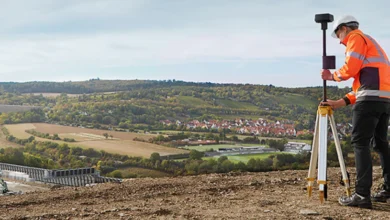The Mystique of Sand Dollars: A Comprehensive Guide

Explore the fascinating world of sand dollars, their biology, habitats, significance, and much more in this detailed guide. Discover all there is to know about these unique marine creatures.
The Mystique of Sand Dollars: A Comprehensive Guide
Introduction to Sand Dollars
Sand dollars, with their intriguing appearance and fascinating biology, The Mystique of Sand Dollars have long captured the curiosity of beachcombers and marine enthusiasts alike. These unique echinoderms, found in oceans worldwide, are more than just pretty shells to collect. They play a crucial role in marine ecosystems and possess a rich cultural significance.
What are Sand Dollars?
Sand dollars are flat, burrowing sea urchins belonging to the order Clypeasteroida. Their name is derived from their coin-like shape, and their intricate patterns make them a popular find on sandy beaches. These creatures are known for their radial symmetry and distinctive star-shaped pattern on their upper surface.
Biology and Anatomy of Sand Dollars
Physical Characteristics
Sand dollars have a unique structure with a flat, disk-shaped body covered in tiny spines. These spines aid in movement and feeding. The body, or test, of a sand dollar is composed of calcium carbonate and is typically white or light gray, although living sand dollars can appear purple or green due to their soft tissue.
Life Cycle and Reproduction
Sand dollars exhibit a fascinating life cycle, beginning as planktonic larvae. After several weeks, they settle onto the ocean floor and metamorphose into their adult form. Sand dollars reproduce by releasing eggs and sperm into the water column, where fertilization occurs. The resulting larvae go through several stages before becoming juvenile sand dollars.
Feeding Habits
Sand dollars are detritivores, meaning they feed on organic matter found in the sand. They use their spines and cilia to move food particles towards their mouth, located on the underside of their body. Their diet primarily consists of algae, diatoms, and other small organic particles.
Habitat and Distribution of Sand Dollars
Geographic Range
Sand dollars are found in coastal waters worldwide, from the shallow intertidal zone to depths of over 100 feet. They are particularly abundant in temperate and tropical regions.
Preferred Environments
Sand dollars prefer sandy or muddy substrates where they can burrow and find food. They are often found in sheltered bays, estuaries, and along sandy beaches.
Adaptations to Habitat
Sand dollars have developed several adaptations to thrive in their sandy environments. Their flattened bodies allow them to burrow easily, and their spines help anchor them in place to avoid being swept away by currents.
Different Species of Sand Dollars
Common Species
Some of the most common species of sand dollars include Dendraster excentricus, found along the west coast of North America, and Clypeaster rosaceus, found in the Caribbean.
Rare and Endangered Species
Certain species of sand dollars are considered rare or endangered due to habitat loss and other environmental pressures. Research and conservation efforts are ongoing to protect these vulnerable species.
Sand Dollar Behavior
Movement and Locomotion
Despite their seemingly stationary appearance, sand dollars are capable of movement. They use their spines and tube feet to slowly move across the sandy bottom in search of food.
Defense Mechanisms
Sand dollars have several defense mechanisms to protect themselves from predators. Their hard, calcified bodies provide a physical barrier, and they can burrow into the sand to avoid detection.
Social Interactions
While sand dollars are not known for complex social behaviors, they often aggregate in large groups, which may provide some protection from predators and increase their chances of successful reproduction.
The Role of Sand Dollars in the Ecosystem
Ecological Importance
Sand dollars play a vital role in marine ecosystems. By burrowing and feeding on detritus, they help recycle nutrients and maintain the health of the seabed.
Predators and Prey
Sand dollars have several natural predators, including fish, sea stars, and crabs. They also play a role as prey in the food web, supporting a variety of marine species.
Symbiotic Relationships
Sand dollars often have symbiotic relationships with other marine organisms. For example, small crustaceans and other invertebrates may live on or around sand dollars, benefiting from their presence.
Collecting Sand Dollars
Best Locations for Finding Sand Dollars
Beaches with sandy substrates are the best places to find sand dollars. Tidal pools and the low tide line are particularly fruitful areas for collectors.
Ethical Collecting Practices
It’s important to collect sand dollars responsibly. Only take dead sand dollars, which are usually white and brittle, and leave live ones, which are often darker in color, in their natural habitat.
Preservation Techniques
To preserve sand dollars, clean them gently with fresh water and let them dry completely. To strengthen them, you can soak them in a solution of water and white glue.
Sand Dollar Myths and Legends
Cultural Significance
Sand dollars have been part of human folklore for centuries. They are often associated with symbols of peace, transformation, and the mystery of the ocean.
Folklore and Symbolism
Many cultures have myths surrounding sand dollars. Some believe they are the currency of mermaids, while others see the star pattern as a symbol of the Star of Bethlehem.
Scientific Research on Sand Dollars
Recent Studies
Recent studies on sand dollars have focused on their reproductive biology, ecological roles, and the impacts of climate change on their populations.
Discoveries and Innovations
Scientists continue to discover new species of sand dollars and learn more about their complex life cycles and behaviors, contributing to our understanding of marine biodiversity.
Human Impact on Sand Dollars
Environmental Threats
Sand dollars face numerous threats from human activities, including habitat destruction, pollution, and climate change. These impacts can reduce their populations and disrupt their ecosystems.
Conservation Efforts
Conservation efforts are underway to protect sand dollar habitats and promote sustainable practices. Marine protected areas and environmental regulations play a key role in these efforts.
How to Help Protect Sand Dollars
Individuals can help protect sand dollars by supporting conservation organizations, reducing their carbon footprint, and practicing responsible beachcombing.
Frequently Asked Questions about Sand Dollars
Where can I find sand dollars? Sand dollars can be found on sandy beaches, particularly during low tide. Look in tidal pools and along the low tide line.
Are sand dollars alive when you find them on the beach? Live sand dollars are often darker in color and have tiny spines on their surface. Dead sand dollars are usually white and brittle.
How can I preserve a sand dollar? To preserve a sand dollar, clean it gently with fresh water and let it dry completely. You can soak it in a solution of water and white glue to strengthen it.
What do sand dollars eat? Sand dollars feed on small organic particles found in the sand, including algae, diatoms, and detritus.
Are sand dollars endangered? While some species of sand dollars are rare or endangered, many are still common. Conservation efforts are important to protect their habitats.
Why do sand dollars have a star pattern? The star pattern on a sand dollar’s upper surface is part of its skeletal structure. It is believed to help with their movement and feeding.
Conclusion
Sand dollars are fascinating marine creatures with a rich biology and significant ecological roles. Understanding their life cycle, habitat, and the challenges they face can help us appreciate and protect these unique echinoderms. Whether you encounter them on a beach walk or delve into their scientific study, sand dollars offer a window into the intricate and beautiful world of marine life.


